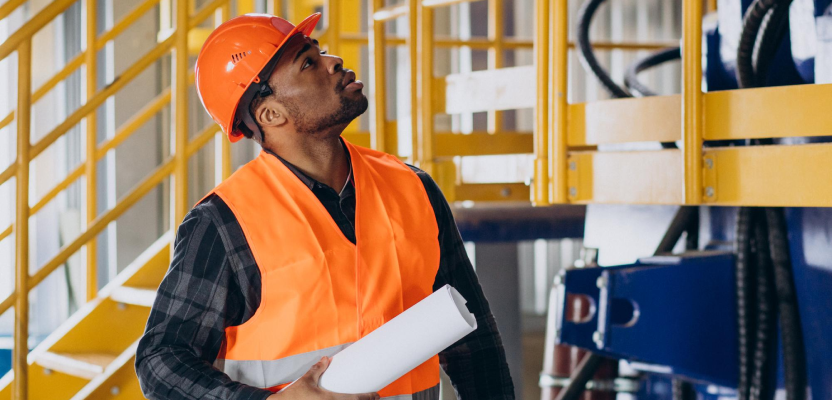What is the Best Way to Prevent Backflow
Have you ever wondered how to effectively safeguard your water supply from backflow incidents?
Backflow is a serious issue that can occur in plumbing systems, putting the health and safety of individuals at risk. Backflow happens when contaminated water flows back into the clean water supply, contaminating it with harmful bacteria, chemicals, and other pollutants.
Understanding the best methods for preventing backflow is crucial in maintaining the purity of your water system. By exploring various backflow prevention devices and implementing proper maintenance routines, you can ensure the integrity of your water supply remains uncompromised.
But what is the best way to prevent backflow?
Backflow Overview
Backflow is a plumbing issue that many people don’t think about until it happens to them. But understanding how backflow works and how to prevent it can save you a lot of headaches and potentially costly repairs in the future.
Backflow occurs when the normal flow of water in a plumbing system is reversed, causing contaminated water to flow back into the clean water supply. This can happen for a number of reasons, such as a drop in water pressure, a burst pipe, or a sudden change in temperature. When backflow occurs, it can introduce harmful bacteria and chemicals into your drinking water, posing a serious health risk to you and your family.
Importance of Backflow Prevention
To prevent contamination, backflow prevention is crucial in maintaining the safety of your water supply. There are numerous benefits to investing in backflow prevention systems. These systems not only protect your health by ensuring that clean water is always available, but they also safeguard the community’s water sources from pollution. In many places, there are strict regulations in place that require the installation of backflow prevention devices to prevent potential hazards.
When considering the cost of backflow prevention, it’s essential to weigh the expenses against the potential risks of water contamination. While the initial installation cost may seem significant, it’s a small price to pay compared to the potential consequences of a contaminated water supply. Additionally, the installation process is relatively straightforward, especially when compared to the benefits it provides in terms of water safety. By adhering to regulations and investing in backflow prevention, you can ensure that your water supply remains clean and safe for consumption.
Types of Backflow Prevention Devices
When selecting backflow prevention devices, it’s essential to consider the specific needs of your water system and the level of protection required. There are various types of backflow prevention devices available to safeguard your water supply.
Double-check valve assembly: This type of backflow prevention device uses two independently acting, spring-loaded check valves to prevent backflow. The two valves work together to create a redundant barrier, ensuring that water does not flow back into the system. Double-check valve assemblies are typically used in commercial and industrial settings where backflow prevention is critical.
Reduced pressure zone assembly (RPZA): RPZAs are versatile backflow prevention devices that incorporate two independently operating check valves and a pressure differential relief valve. This design allows the device to release excess pressure and prevent backflow in a variety of applications. RPZAs are commonly used in residential, commercial, and industrial settings.
Pressure vacuum breaker (PVB): PVBs are compact backflow prevention devices that incorporate a spring-loaded check valve and an air inlet valve. The air inlet valve opens when there is a drop in pressure, allowing air to enter the system and prevent backflow. PVBs are often used in outdoor plumbing systems, such as irrigation systems and sprinklers.
Atmospheric vacuum breaker (AVB): AVBs are simple backflow prevention devices that use a check valve and an air inlet valve to protect against backflow. They are commonly used in residential plumbing systems, such as outdoor faucets and hose bibs. AVBs are easy to install and maintain, making them a cost-effective option for preventing backflow.
Dual check valve: Dual check valves are basic backflow prevention devices that consist of two spring-loaded check valves installed in series. This design provides a reliable barrier against backflow in low-risk applications, such as residential plumbing systems. Dual check valves are affordable and easy to install, making them a popular choice for homeowners.
Maintenance Tips for Backflow Prevention
To prevent backflow, it is important to properly maintain backflow prevention devices and systems. Here are some maintenance tips to keep your backflow prevention system in good working condition:
Regular Inspections
Inspecting backflow prevention devices on a regular basis is crucial to ensure they are functioning properly. It is recommended to have a professional plumber inspect your backflow prevention devices at least once a year. During the inspection, the plumber will check for any leaks, cracks, or other damage that could compromise the device’s effectiveness.
Testing
In addition to regular inspections, backflow prevention devices should be tested on a regular basis to ensure they are working properly. Most municipalities require annual backflow testing to be performed by a certified tester. This test will check the device’s ability to prevent backflow and ensure it meets the necessary standards.
Repairs and Replacements
If during an inspection or testing it is discovered that a backflow prevention device is not functioning properly, it is essential to repair or replace the device as soon as possible. Ignoring faulty backflow prevention devices can lead to serious health hazards and costly repairs in the future.
Winterization
In cold climates, it is important to properly winterize backflow prevention devices to prevent freezing and damage. This may involve draining the device or installing insulation to protect it from extreme temperatures.
Keep Records
Keeping detailed records of inspections, tests, repairs, and replacements of backflow prevention devices is important for compliance with regulations and for maintaining a safe water supply. It is also helpful for tracking the maintenance history of each device and planning for future maintenance needs.
Two Anchors Plumbing Can Help Prevent Backflow
At Two Anchors Plumbing, we specialize in backflow prevention and can help ensure that your plumbing system is protected from this potentially dangerous issue. Our team of experienced plumbers can install backflow prevention devices in your home or business, ensuring that your water stays safe and clean.
With Two Anchors Plumbing on your side, you can rest easy knowing that your plumbing system is in good hands.orporate value. Energistically network cross media action items via virtual methodologies.





